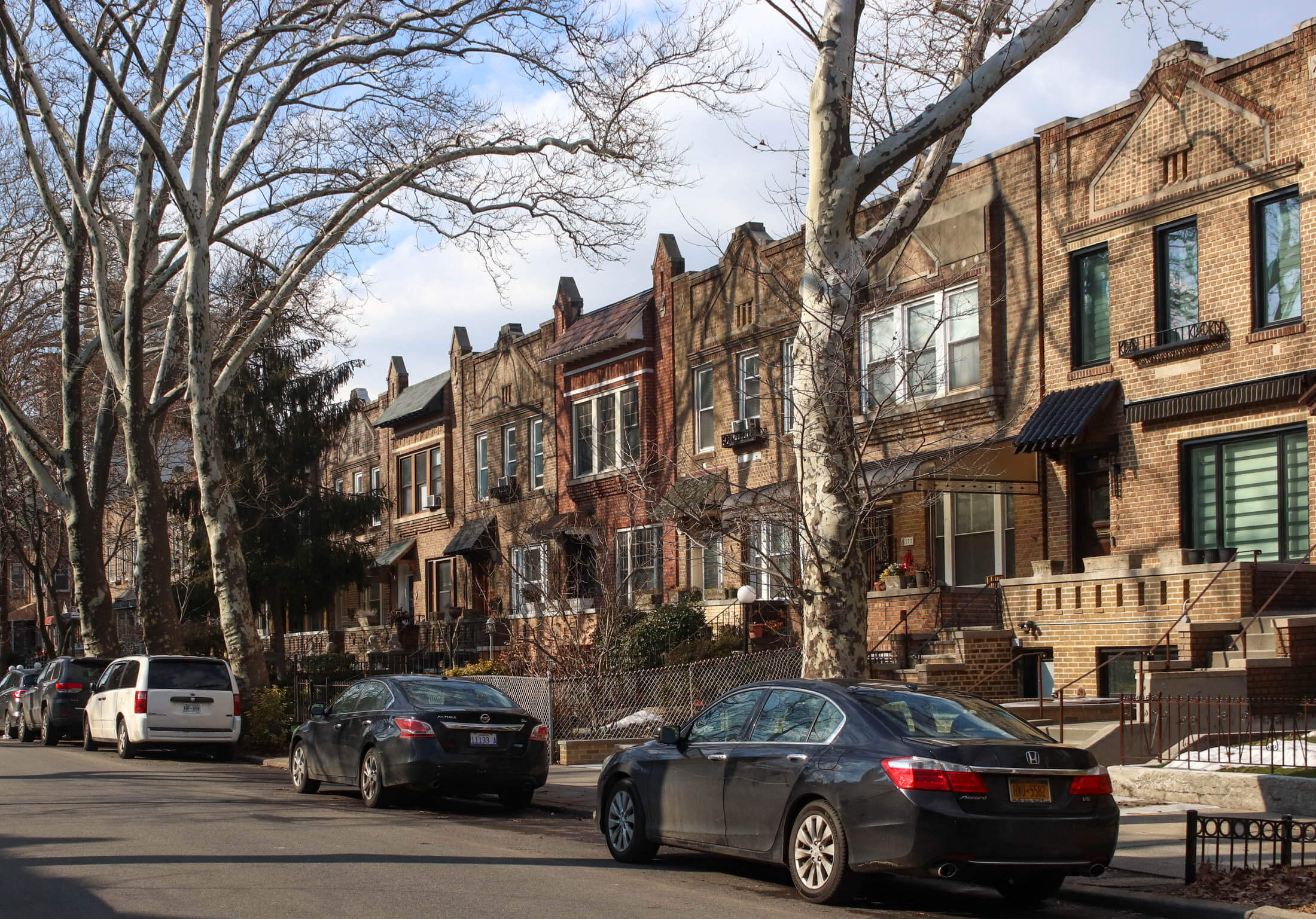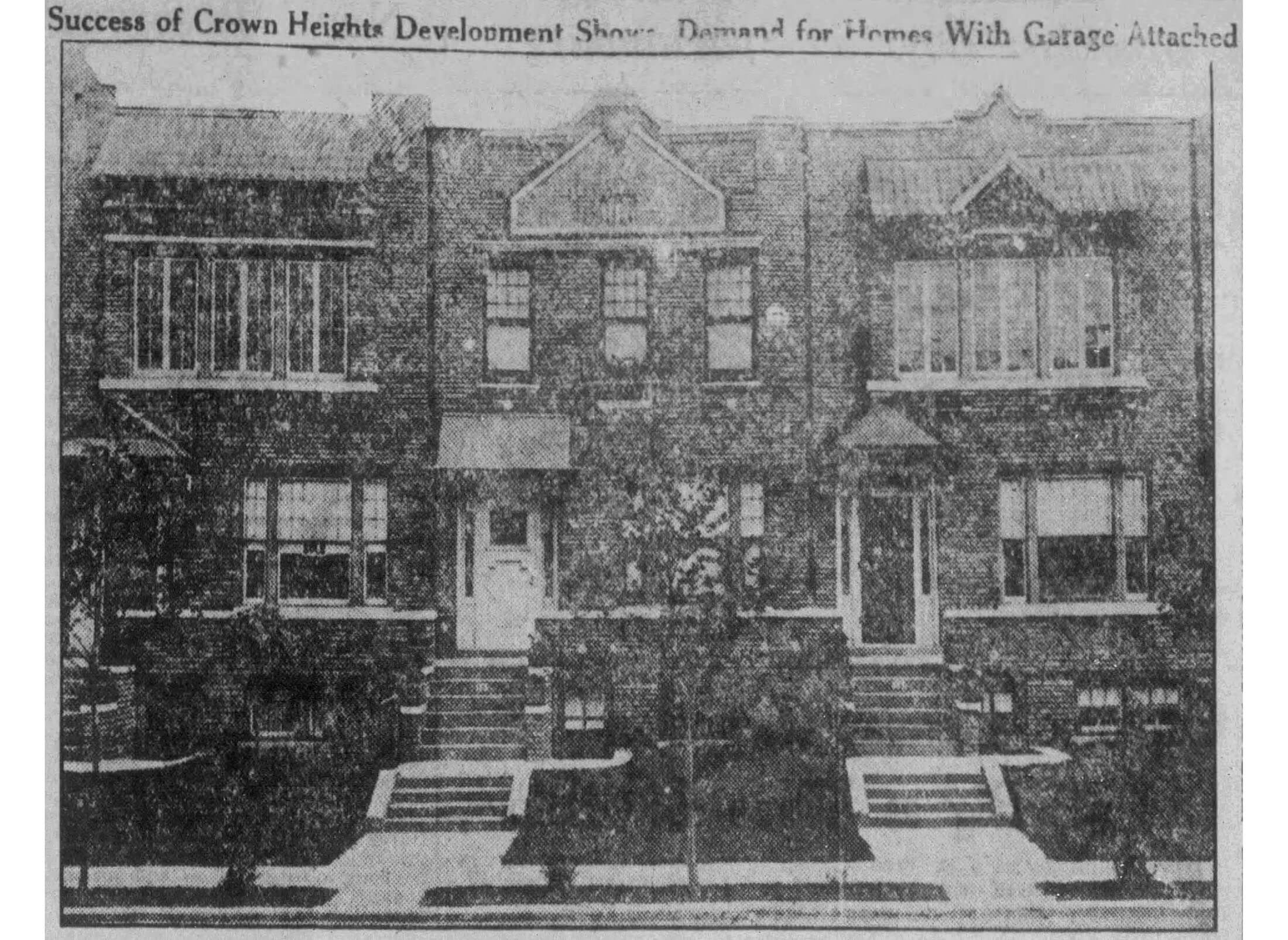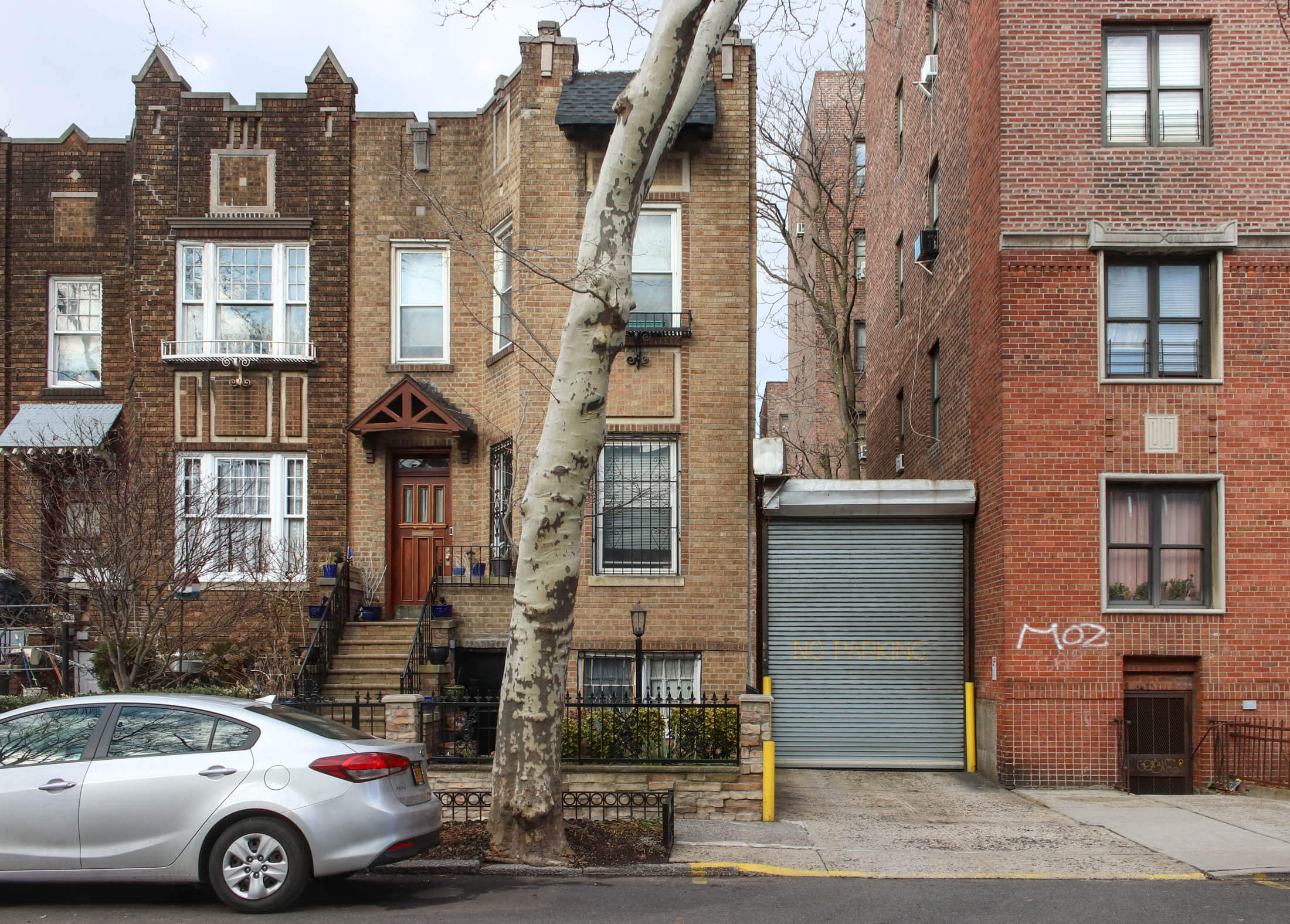Ask Brownstoner: How Can I Find Out More About the Houses on My Crown Heights Block?
A reader is curious about whether it is possible to identify the architect or builder behind the design of the row houses that fill a Crown Heights block.

Photo by Susan De Vries
Brownstoner often gets inquiries from readers asking for more information about the age, style or architect of a particular building, the background of a history-making Brooklynite or the architectural history of a neighborhood. While we can’t conduct in-depth research for every intriguing question, we can provide a bit of background and some research tips to guide the curious.
Reader: Do you know anything about the history of the lovely block of Crown Street between Bedford and Rogers avenues? There are alleys and garages behind the houses but I haven’t been able to find much about the block.
Brownstoner: A look at this block of Crown Street shows rows of similar, but not quite identical, houses lining both sides of much of the block. The scale and some of the architectural details, like the tapestry brick facades, clay tile roofs and front terraces, all give clues to an early 20th century origins — as does the presence of the garages you noticed. The block is not located within one of the Crown Heights historic districts so a bit more digging is needed to uncover the details.

One way to confirm that a building existed prior to 1939 is to look at the digitized historic tax photos, which document every taxable block and lot in all five boroughs. The collection is searchable online either by block and lot number or street address via the Municipal Archives or you can explore them through this volunteer-created map.
Although sometimes a search can draw a blank, there is plenty to see on the north and south sides of this stretch of Crown Street. The black and white photos show the houses intact and some curious children playing on the street — and following the photographers from shot to shot — people on stoops and cars parked in front of houses.
Another easy-to-use online resource for digging into local history is the Brooklyn Newsstand via the Brooklyn Public Library, with free access to more than 1 million pages from local newspapers. A search, often using multiple search terms and a bit of trial and error, can turn up a treasure trove of information. For this block, a search quickly unearthed a series of articles and ads from 1915 to 1917 for Realty Associates’ new “Easy Housekeeping Houses” on Crown Street between Rogers and Bedford avenues. The arrival of the subway to what was then called the Eastern Parkway Section spurred development. At the time, single-family and two-family houses with practical layouts and modern amenities that did not require the aid of servants were popular with builders. Realty Associates was advertising their company as “Builders of Easy Housekeeping Homes” at least as early as 1912.

For their Crown Street development, 1915 ads pitched walnut woodwork, “artistically tiled mantels,” electric lights and “unequaled closet room.” In reporting on the houses, the Brooklyn Daily Eagle noted the developer took advantage of the “exceptional depth of the blocks” to include driveways, or alleyways, through the center of each block to allow for garages at the end of each lot. A truly modern convenience in 1915.
A search through the digitized Real Estate Record shows that the architect behind the design of the houses in 1915 was Arthur G. Carlson, perhaps better known for his partnership with Frederick W. Eisenla in the firm Eisenla & Carlson and their work on numerous apartment buildings in Brooklyn. The firm dissolved in 1914 and these houses were designed by Carlson while he worked independently.

This quick dig doesn’t even begin to tap the undoubtedly rich social history of the block, which can be explored through more historic newspaper research, census records and Brooklyn directories, but it should provide enough tips to get you started on a deep dive into the story of the block.
[Photos by Susan De Vries unless noted otherwise]
Submit your questions about Brooklyn history and architecture. Post a comment to this story or email us at tips@brownstoner.com
Related Stories
- The One Thing You Need to Know About Dating an Old House
- Researching Your Old House: How to Find Original Brooklyn Row House Blueprints
- See What Your Home Once Looked Like With Newly Digitized 1940s Tax Photos
Email tips@brownstoner.com with further comments, questions or tips. Follow Brownstoner on Twitter and Instagram, and like us on Facebook.









What's Your Take? Leave a Comment